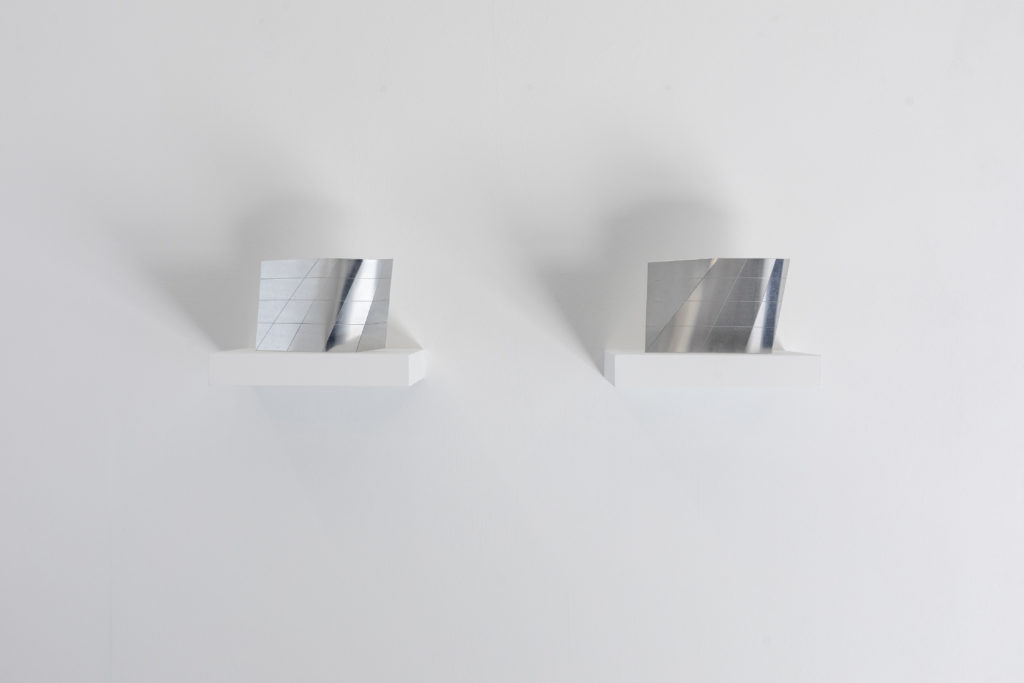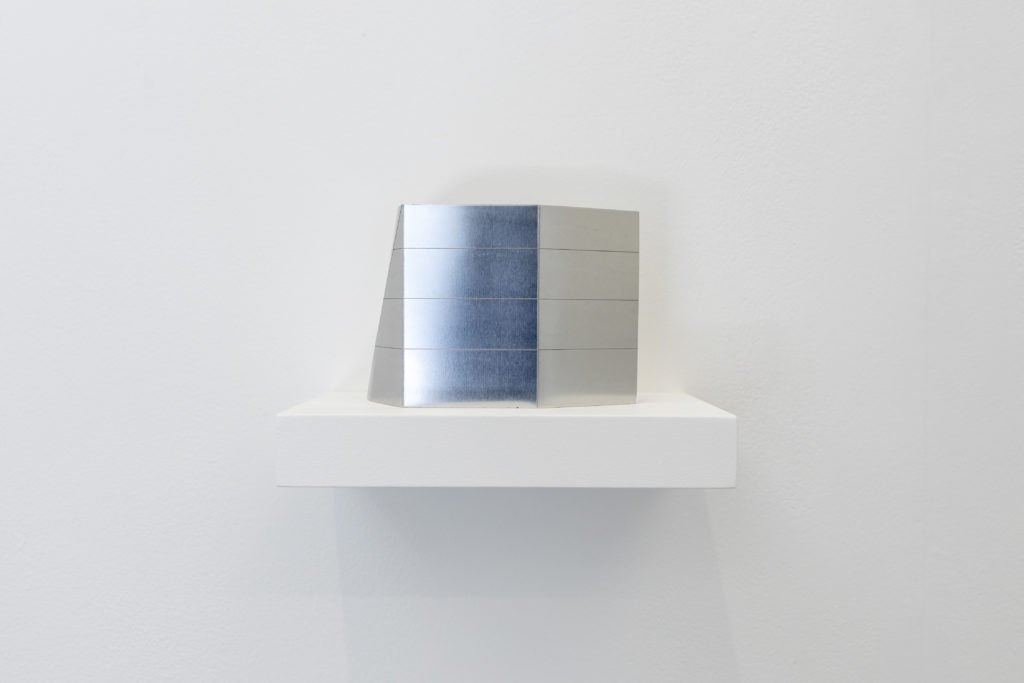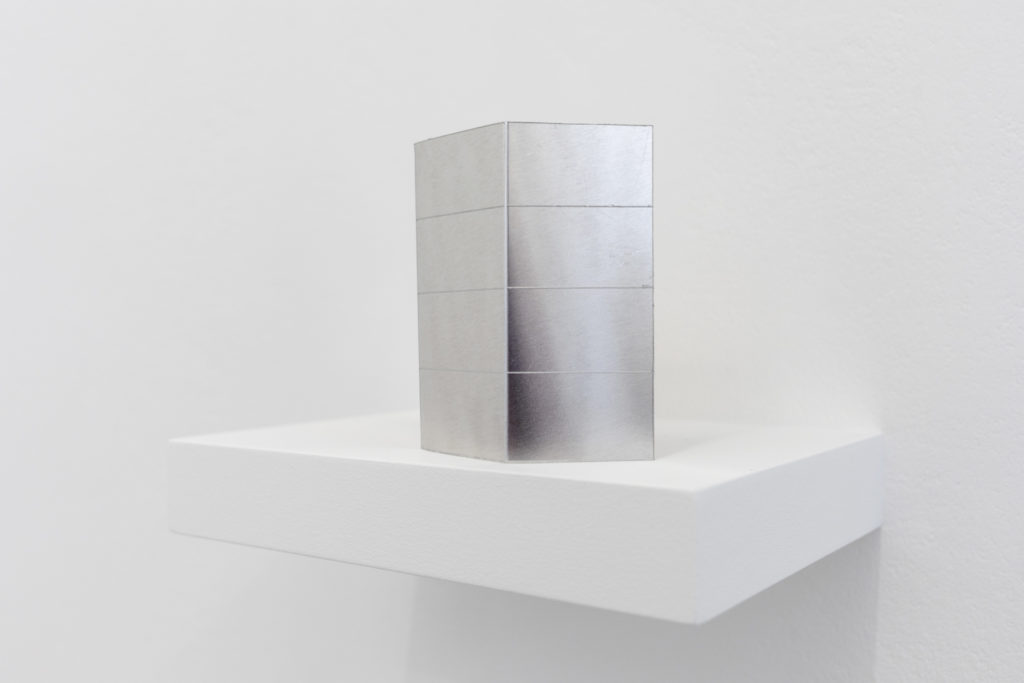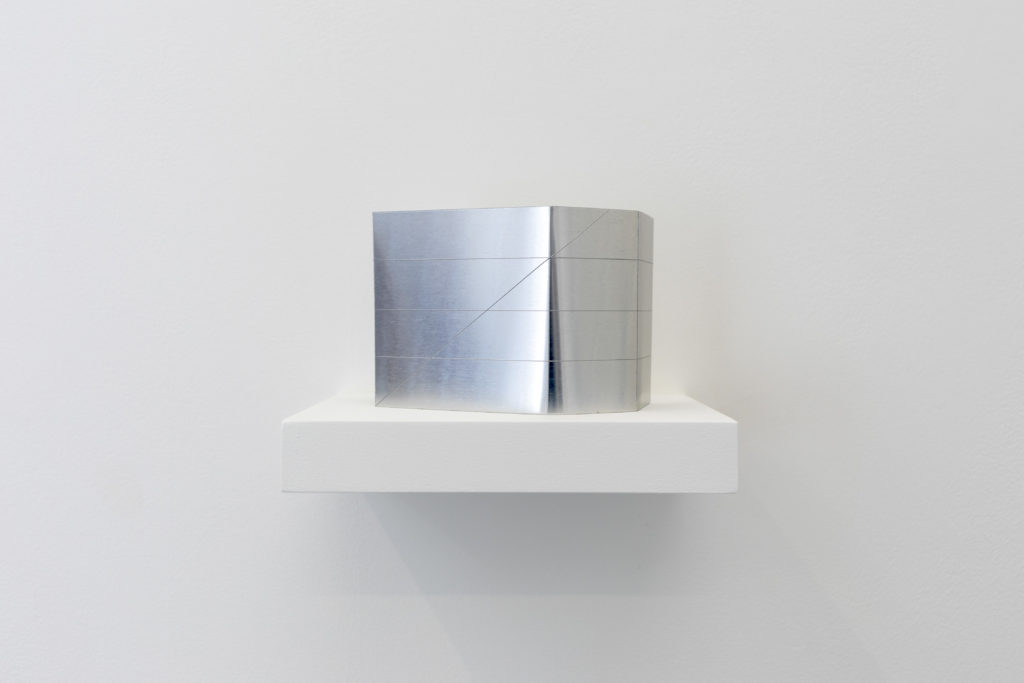Read Leeds City Art Gallery Curator Nigel Walsh’s commentary on Joe Devlin’ s ‘Gatefolds’ – an exhibition of sculptures currently on display at Studio 2, Todmorden. With photos by Simon Pantling.

He sits in a library sorting through books, it’s his job; some to consign to storage, some for elsewhere, the continual passage of print and paper, some things catch his eye, one thing arrests his interest, he makes a copy; then moves on, the fidelities of the archive.
The encounter Joe Devlin had with a singular page of a book set a hare running, to use a countryside analogy, and triggered associations that led to this present group of folded, aluminium low-relief objects, spare in their aesthetic, rich in evocation; his curiosity piqued he copied the page for consumption later, while the book moved on to its destination, its title and date and author and subject of little or no consequence. The perils of the archive, which solicits acknowledgment, but denied can in fact be liberating.

The page showed gates, simply that, arranged by type, an exercise in what might be called local distinctiveness, a taxonomy of regional styles. The layout and font suggest it might originate in the 1930s. And this would make sense in terms of its content. This was a period, post First World War, and with a feeling that Europe and beyond were slipping inexorably into another field of conflict, that the countryside and landscape signified solid matters that rooted a national consciousness, and connected the psyche with ancient and primitive that had been lost. The period between the Wars saw the reception of English ‘landscape’ poetry span Edward Thomas’s use of vernacular verse-patterns to TS Eliot’s halting demotic yet symbolic language in the Waste Land and the Four Quartets at the end of the 30s. Artists who’d gone to fight in France, such as Paul Nash had witnessed the landscape itself brutalised and torn apart.
In his painting, object-sculpture and photography, landscape is key, as it was in the work of Graham Sutherland and John Piper, who were part of an English avant garde who allied a modernist aesthetic with ‘neo-romanticism’ and set about harnessing elements of lost, ancient vernacular traditions, to their own ends. This ‘return to landscape’, also saw millions returning to walking in the countryside as a leisure-time pursuit, the inception of English Heritage and the ‘Shell Guides’ for motorists in which these same artists codified and revealed aspects of landscape that has been lost to the popular imagination.

In other words, gates mattered; along with the rest of the ‘furniture’, man-made or wrought by nature, they were elements that could and did signify. The gate that appears in a painting of around 1823, in the Leeds’ collection, showing William Wright, ‘gatekeeper’ at Bramham Park matters in a different way. It’s quite clear it can be identified a ‘Yorkshire’ gate from the sheet defining local styles. But when the owners of Bramham commissioned the artist George Gartside to paint the staff on the estate, it was a controlled gate that demarcated property. Things had moved on by the time Nash, Sutherland and Piper were helping define a more democratised landscape. Regional distinctions had been recognised; more gates had been opened.

I’m not suggesting Joe Devlin’s objects delineate a commentary on the current state of our relationship with the English countryside and the right to roam, or other such ‘Country File’ matters. But they could if we wanted them to. They have a lightness of touch and a deftness in their making – a simplicity of manipulating, scoring, and folding small sheets of aluminium before they’re sent for custom-finishing – that embraces other interests Joe invests in them, drawing alliances between English vernacular styles and minimalist-constructivist languages. As they catch reflected colour, they react like miniature sentinels. As the elusive sheet defining local gate styles before them, they have an emblematic life. What they are emblems of remains to be seen.
*
‘Gatefolds’ is on display at Studio 2, Robinwood Mill, Todmorden, until 18 May, and is open every Saturday 12-5pm, or by appointment. More information here.